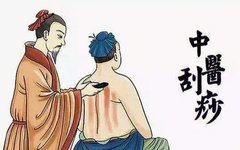 What are the Functions and Effects of Gua Sha?
What are the Functions and Effects of Gua Sha?
Gua Sha is a commonly used technique in Traditional Chinese Medicine (TCM), primarily known for its effects of promoting blood circulation and resolving blood stasis (活血化瘀 – huó xuè huà yū), clearing heat and detoxifying (清热解毒 – qīng rè jiě dú), and tonifying the middle and benefiting qi (补中益气 – bǔ zhōng yì qì). Clinically, it can serve as an adjunctive treatment for respiratory diseases, gynecological disorders, neurological conditions, endocrine system diseases, and cardiovascular diseases, among others, but treatment of these conditions should still focus on addressing the root cause.
1. Promoting Blood Circulation and Resolving Blood Stasis: The heat and force generated during Gua Sha can be transmitted to the skin’s vascular tissues, facilitating blood flow and dissipating stasis, thus achieving the goal of promoting blood circulation and resolving blood stasis.
2. Clearing Heat and Detoxifying: In TCM, the marks left by Gua Sha are seen as symbols of toxins and dampness within the body, often caused by blocked meridians. Gua Sha can help to unblock the meridians and disperse qi, thereby aiding in the clearance of heat and detoxification, promoting the expulsion of toxins and dampness.
3. Tonifying the Middle and Benefiting Qi: Gua Sha can be performed with either a tonifying or draining technique. By scraping along the meridians or at specific areas such as around the navel, it can also invigorate blood and nourish, promote qi and blood, thus achieving the effect of tonifying the middle and benefiting qi.
4. Other Effects: Gua Sha also has the ability to regulate yin and yang, and strengthen organ functions. Various clinical diseases are related to the disruption of qi and blood, and dysfunction of the organs. Through Gua Sha treatment on different meridians and acupuncture points, it can further promote the recovery from various conditions such as colds, coughs, asthma, dysmenorrhea, insomnia, acne, obesity, and chronic fatigue syndrome.
5. Relative Indications for Gua Sha: Common indications include colds, fevers, heat stroke, headaches, gastrointestinal disorders, stiff neck, shoulder periarthritis, lumbar muscle strain, muscle spasms, and rheumatoid arthritis.

What are the Contraindications for Gua Sha?
The contraindications for Gua Sha include the following:
1. Avoid Gua Sha on areas with abscesses, ulcers, or scars.
2. It is not suitable for areas with infectious or contagious skin diseases.
3. Avoid Gua Sha on areas with wounds, fractures, or trauma.
4. Gua Sha is prohibited on sensitive areas such as the eyes, nostrils, lips, perineum, and navel.
5. Gua Sha is not allowed on the breast area.
6. Avoid Gua Sha for unexplained lumps, untreated malignant tumors, or blood disorders such as hemophilia.
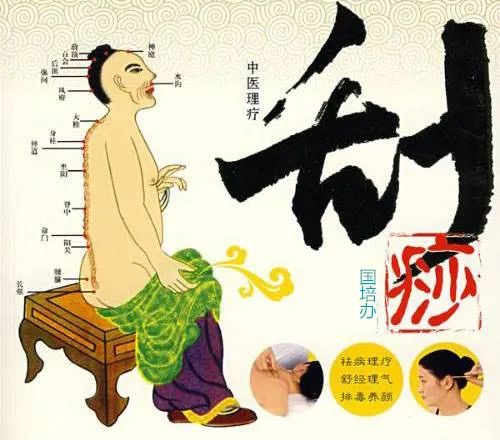
Difference Between Red and Purple Marks from Gua Sha
The red and purple marks from Gua Sha generally refer to the different types of marks left, both of which are normal manifestations. Different colors of marks represent individual constitution, nature of the disease, and severity of the condition. Additionally, improper technique or excessive force during Gua Sha can also lead to different colors of marks, so individuals seeking Gua Sha treatment or health care should go to a qualified hospital for the procedure.
1. Personal Constitution: Red marks generally indicate a balanced constitution or phlegm-damp constitution, possibly indicating excess fire or deficiency fire, while purple marks typically represent blood stasis constitution. Based on the different colors of the marks, one can adjust their treatment accordingly; those with phlegm-damp constitution can focus on resolving phlegm and dampness, while those with blood stasis constitution can promote blood circulation and resolve stasis.
2. Nature of the Disease: Generally, the lighter the color of the marks, the less severe the disease. Red marks that are dot-like or patchy usually indicate a superficial or heat syndrome, while purple marks that are patchy typically indicate a cold syndrome. This can serve as a diagnostic criterion during consultations.
3. Severity of the Condition: The marks can be classified into light, moderate, and severe. Red marks are generally mild and common in healthy or sub-healthy individuals, while purple marks are usually moderate, indicating local microcirculation obstruction and higher toxin levels, often seen in sub-healthy or diseased individuals.
4. Other Factors: Different methods of tonification or draining, treatment locations, and scraping frequency can all lead to different colors of marks. Unless specified by the treating physician, there is generally no need for excessive concern.
Back Mark Colors and Associated Symptoms

Deep red – Heat syndrome; Bright red – Yang deficiency with excess fire; Dark red – True dampness; Black – Cold syndrome; Purple – Eczema; Light blue, purple spots – Qi deficiency with blood stasis; Blue-purple – Severe internal cold; Dark purple-black – Blood stasis with cold; Purple-red – Damp-heat; Large area of warm purple – Heart cold.
1. Red marks: Yang deficiency with excess fire
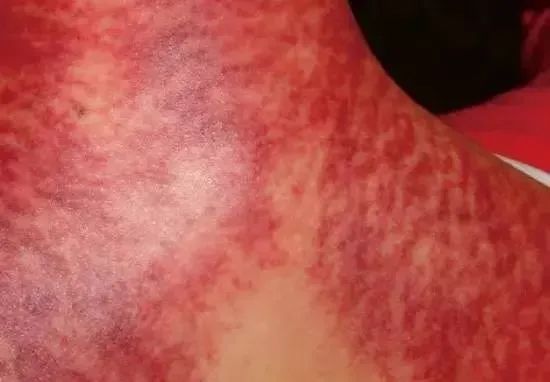
2. Purple marks: Body suffering from eczema
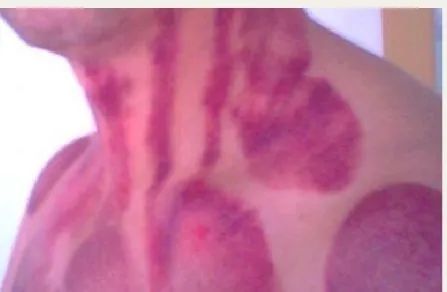
3. Purple-red: Damp-heat, liver heat
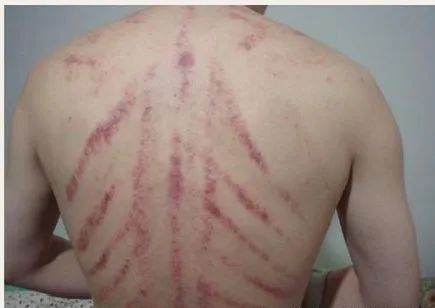
4. Black marks: Cold syndrome
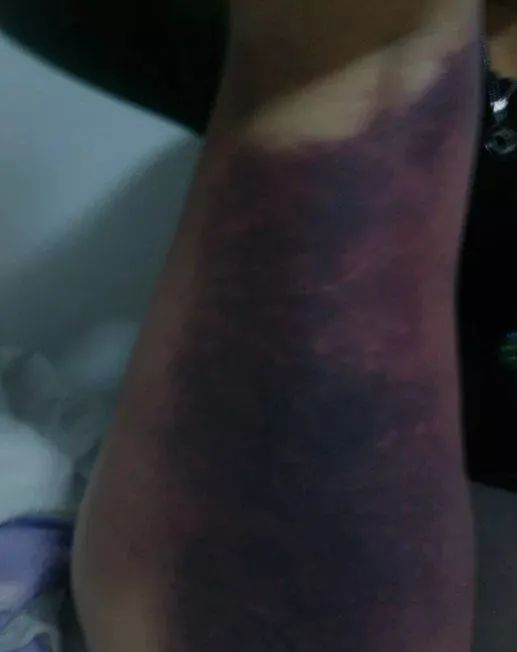
5. Purple-black: Pathogenic factors, yin deficiency

6. Granular: Cold in the uterus, body cold
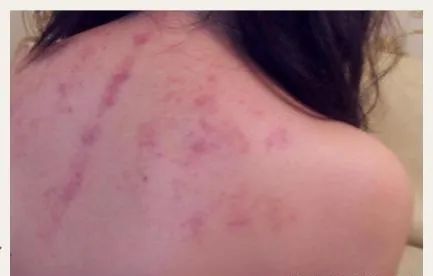
The Shape of Marks Can Also Reflect the Degree of Toxins

Small dot-like marks: Indicate that toxins are accumulating in the epidermis and have not penetrated deeply;
Medium dot-like marks: Indicate that toxins have penetrated deeper but have not reached the bone;
Large dot-like marks: Indicate that toxins are accumulating significantly and have penetrated into the bone marrow.
Mark Color Reference Chart

Mark Color Reference Chart

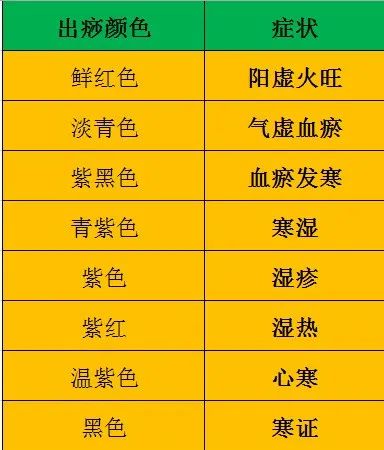
Kangqite Vocational Skills Training School WeChat Official Account: kangqitexuexiao_ Address: 264 Dacheng Street, Nangang District, Harbin (intersection of Dacheng Street and Youzheng Street) Consultation: 0451-53635186/87531162 18246178388/15846003580 Training Specialties: TCM Acupuncture, Adult Tuina, Bone Setting, Lactation Health, Pediatric Tuina, Infant Care, Elderly Care, Career Guidance, Folk Craft Artists, Internet Marketers, Entrepreneurship Advisors, Beauticians, Senior Health Assessors, Health Massage Therapists, Tea Art Practitioners, Public Nutritionists, Health Managers, Health Care Workers, Agricultural Managers, E-commerce Specialists, Multimedia Operators, Psychological Counselors.

